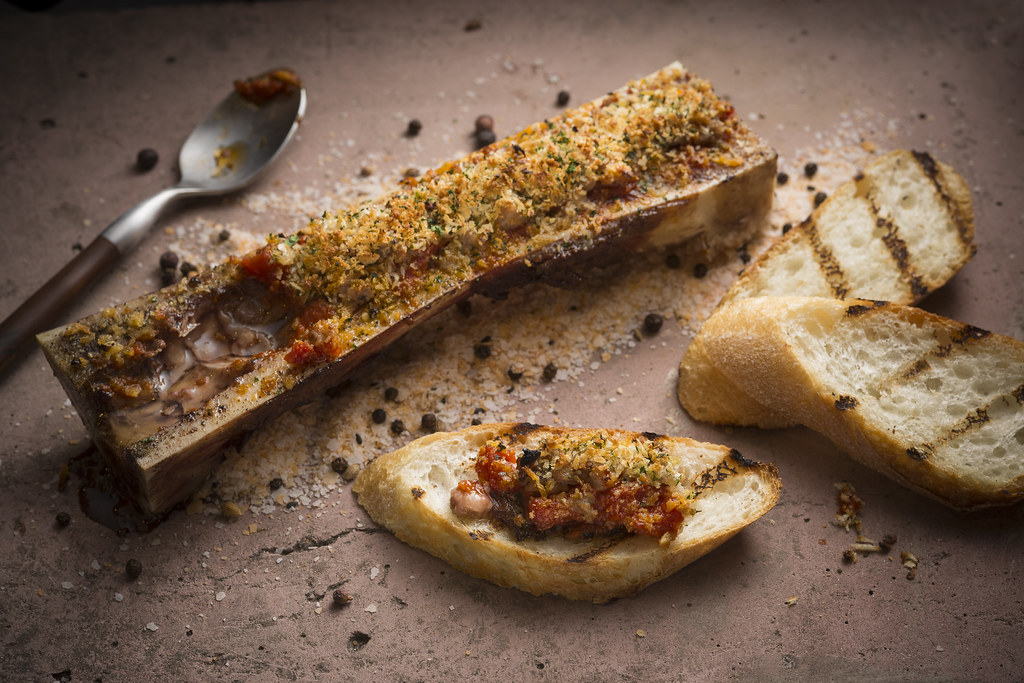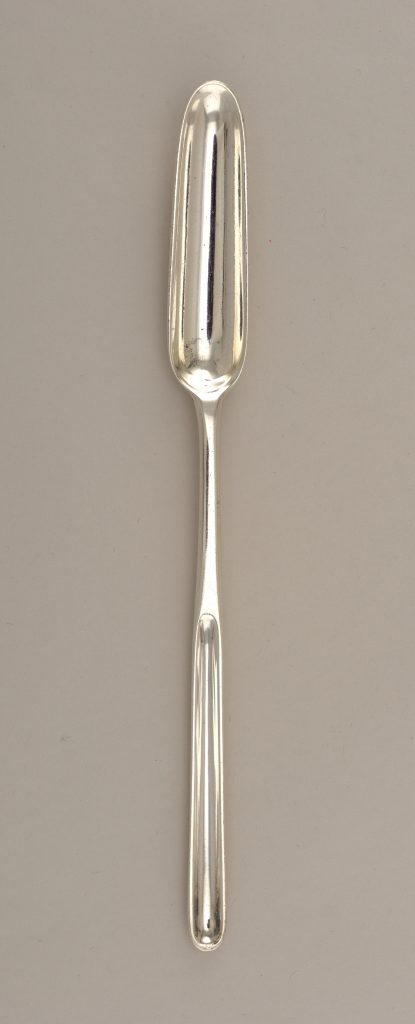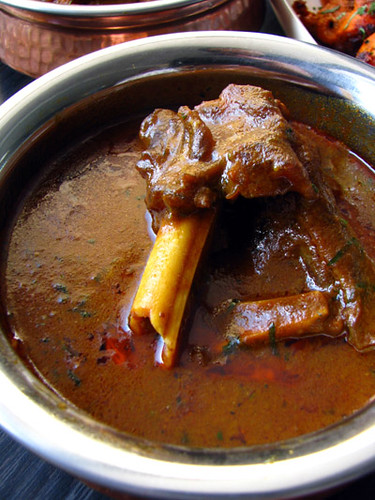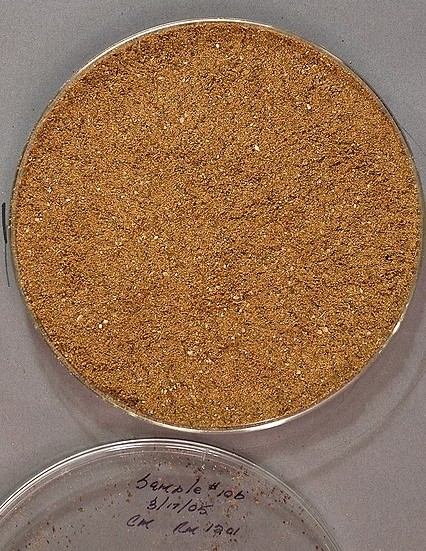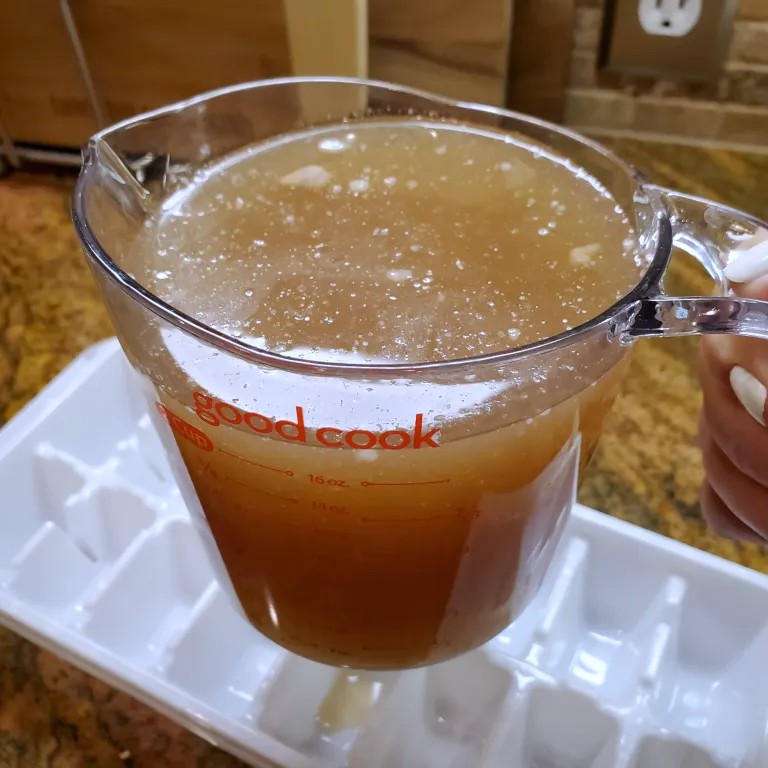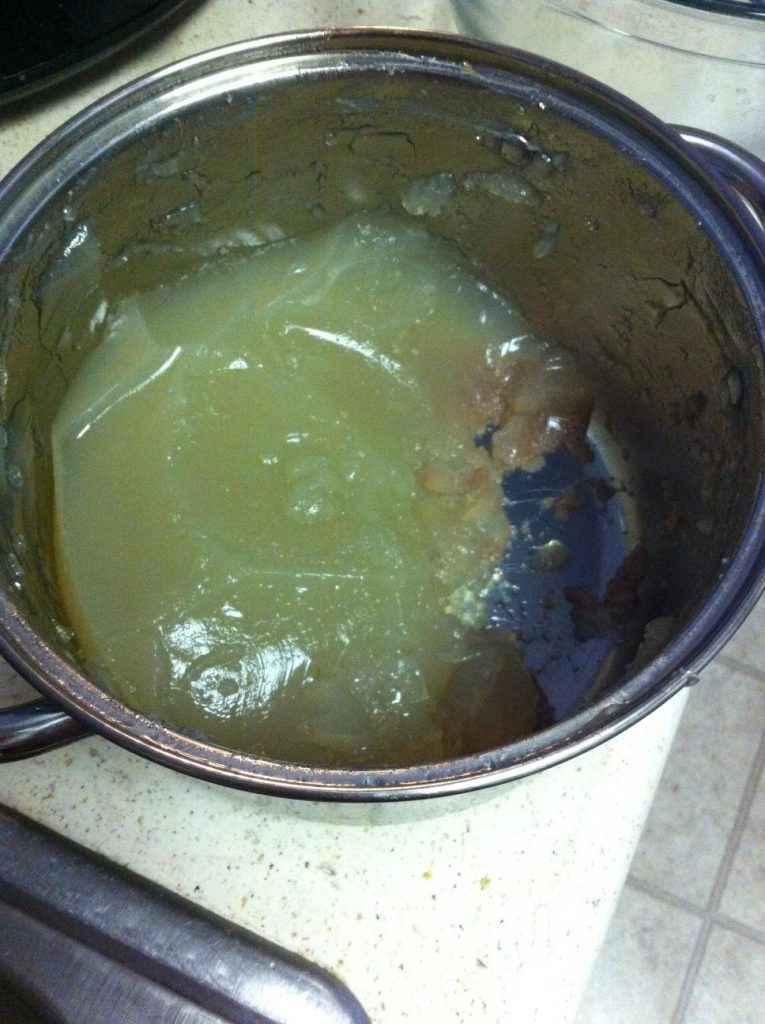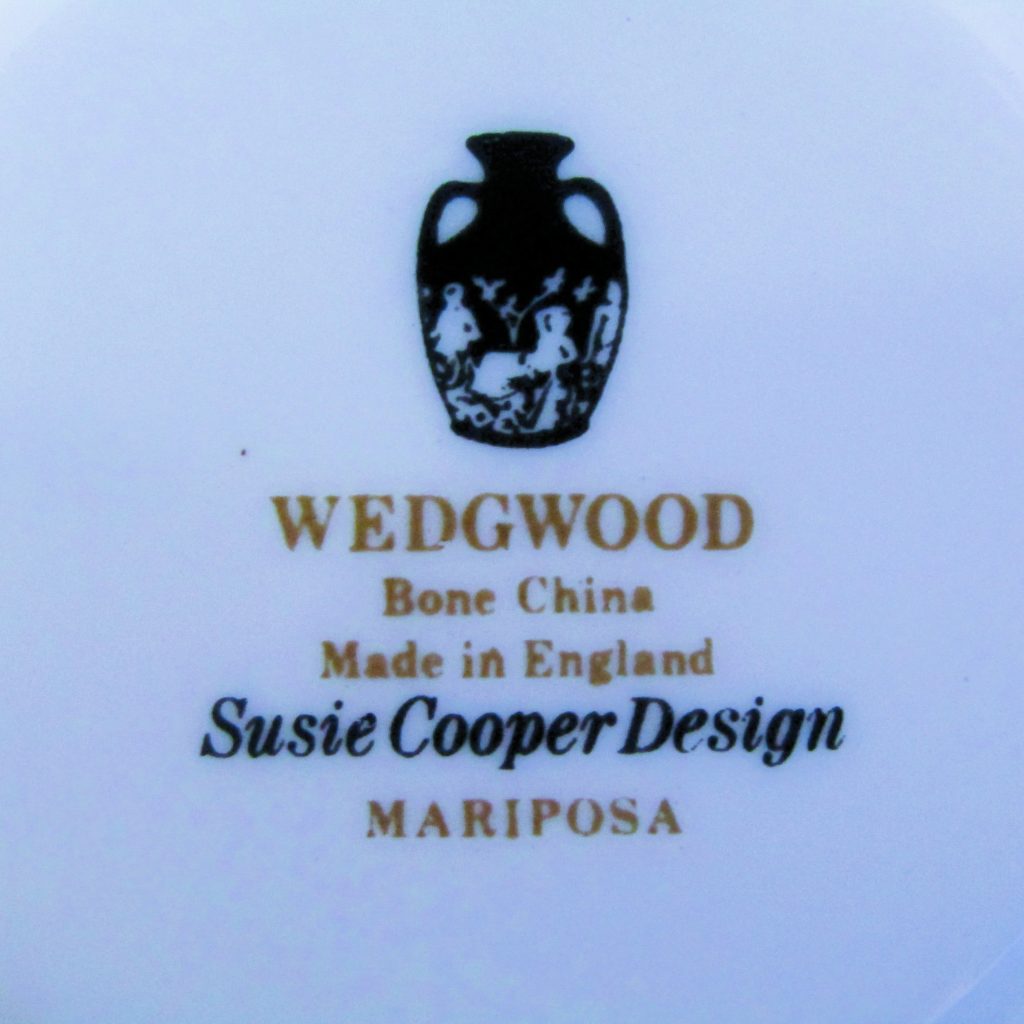In October, my thoughts turn to skeletons. But there is much to bones beyond Halloween decor. In this second bone blog of the month, I turn to food, eating bones to keep body and soul together.
Check out the rest of my October bone series: Bone Music, Fortune Telling Bones, and Bone Appreciation!
Bone Marrow
Humans have always consumed the marrow found in the long bones of animals. (Long bones are those that are longer than they are wide. For example, animal legs.) Today, marrow is found in bone-in cuts of meat from butchers or supermarkets.
European diners in the 18th century even had a specialized implement for removing marrow from a bone: a marrow scoop (or spoon), often of silver, with a long, thin bowl. Bone marrow’s popularity as a food is now relatively limited in the western world, but it remains in use in some gourmet restaurants and is popular among food enthusiasts.
Bone marrow brings a wealth of health benefits to the table. There are two types of bone marrow: yellow and red. Yellow bone marrow is located in the hollow cavities of the long bones. It is usually found at the center, surrounded by red bone marrow. Red marrow contains more nutrients than yellow marrow. But both contain many essential nutrients that boost the immune system (zinc and vitamin A), promote heart health (Omega-3 Fatty Acids and collagen), enhance skin health (collagen), support digestive well-being (because the gelatin in bone marrow has soothing properties) and support joint health (collagen). Bone marrow can even give you an energy boost: high in vitamin content and healthy fats, it provides a steady source of energy throughout the day.
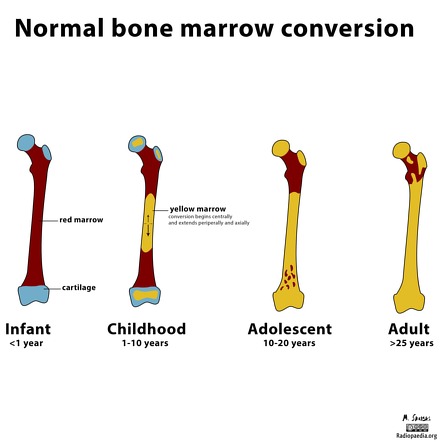
Besides the above, collagen is especially important because, (according to WebMD) it also:
- Helps your blood clot
- Helps replace dead skin cells
- Creates a protective cover for your organs
- Allows new skin cells to grow
While bone marrow offers many benefits, it’s essential to be mindful of its source. If it’s from healthy, well-raised animals, the risks are minimal. However, bone marrow from animals treated with antibiotics or hormones poses potential health risks. Always opt for high-quality, grass-fed sources to ensure the best nutritional value.
Eating Bones and Marrow Around the World
International cuisine is rife with recipes using bone marrow:
- Vietnam: the soup base for the national staple dish, phở.
- Philippines: the soup bulalo, made primarily of beef stock and marrow bones, seasoned with vegetables and boiled meat. Kansi, or sinigang na bulalo, is a sour variation of bulalo flavored with jackfruit.
- Indonesia: bone marrow (sumsum) is especially popular in Minangkabau cuisine. Cooks often prepare sumsum as soup or as gulai (a curry-like dish).
- India and Pakistan: slow-cooked marrow is the core ingredient in the dish nalli nihari.
- China: pig tibia (with one or both ends of the tibia chopped off) make slow-cooked soup. Diners scoop out the marrow with chopsticks or suck it out with a drinking straw.
- Hungary: tibia, chopped into 10–15 cm pieces, is a main ingredient in húsleves beef soup. Cooks cover the ends with salt to prevent the marrow from leaking from the bone while cooking. Diners often spread the marrow on toast.
- Germany: thick slices of whole beef shank with bone and marrow, available in grocery stores, supermarkets, and butcher shops. Cooks use markklöβchen marrow balls in beef soups or beef in horseradish cream sauce.
- Italy: ossobuco (braised veal shanks); cross-cut shanks served bone-in, with the marrow still inside the bone.
- French: pot-au-feu, a traditional dish of cooked bone marrow on toasted bread, sprinkled with coarse sea salt.
- Iran: lamb shanks are usually broken before cooking to allow diners to suck out and eat the marrow when the dish is served. Many South Asian and Middle Eastern cuisines have similar dishes.
- Native Alaskans: the bone marrow eaten here is of caribou and moose.
- Kathmandu, Nepal: a buffalo leaf tripe bag stuffed with bone marrow (Sapu Mhichā) served during special occasions. Diners eat the entire boiled, fried bag.
- United States: pemmican (which I think of as the Native American version of jerky).
Bone Meal/Bonemeal
Historically, people have used bone meal as a human calcium supplement. Research has shown that calcium and lead in their ionic forms (Ca 2+ , Pb 2+) have similar atomic structures and so create a potential for accumulation of lead in bones, sometimes leading to death.
An accumulation of lead in the human body causes lead poisoning (plumbism, saturnism). Researchers believe lead poisoning is behind 0.6% of the world’s disease burden. Symptoms of lead poisoning include abdominal pain, constipation, headaches, irritability, memory problems, infertility, numbness and/or tingling in the hands and feet. In the 1970s, the EPA developed more stringent importation rules for bone meal.
Many farmers still use bone meal, and a variety of other meals, as a dietary/mineral supplement for livestock. However, the improper use of bone and meat meal products in animal nutrition can contribute to the spread of transmissible spongiform encephalopathy, commonly known in cattle as Mad Cow Disease. Proper heat control can reduce salmonella contaminants.
Bone Broth
If you research bone broth online, you will find claims such as, “Bone broth is the ultimate solution to holistic health. Learn more about the reasons why you should incorporate bone broth into your daily routine. Collagen-Rich. High Protein. No Preservatives.”
Or, “Bone Broth Protein is a nourishing, concentrated bone broth that is 3x as potent* as homemade broth and makes it easy to get healthy gut and joint support. Beauty, Joint Support, Gut Support.”
The current popularity of bone broth is sometimes attributed to celebrity and other popular online influencers.
What’s the real scoop? Who better to ask than scientists? In April of 2025, the Feds published a review of relevant research by Ayah Matar, Nada Abdelnaem, and Michael Camilleri.
“Bone broth is a traditional nutrient revered by different people from ancient times to the modern era as a remedy for various illnesses. This review investigates the nutritional components of bone broth…
Bone Broth Benefits: How Its Nutrients Fortify Gut Barrier in Health and Disease by Matar, et al.
“Through comprehensive reviews of animal and human studies, this research highlights that bone broth includes amino acids (glutamine, glycine, proline, histidine, arginine), minerals (Ca, P, K, Mg, Zn) that are beneficial…
“The benefits documented for components in bone broth support the enhancement of gut health, alleviate inflammation in the intestinal barrier, improve intestinal barrier function in health and disease states, particularly in inflammatory bowel disease, as well as enhancing nutrient absorption. Bone broth offers a nutrient-dense option for enhancing overall health and may offer an alternative to dietary supplements with claims for enhanced gut health. We aim to foster interest in and provide evidence to substantiate claims for bone broth as a potential remedy, particularly for maintaining remission in conditions like IBD [inflammatory bowel disease] and possibly functional diarrhea and to encourage further research.”
In short, it’s a great source of nutrition. But is there a down side?
Dangers of Eating Bones
According to medicinenet.com, bone broth, if not prepared with standard manufacturing protocols, may contain heavy metals and harsh chemicals that can harm the body.
- Lead is a heavy metal that may settle on vegetables and plants grown on lead-contaminated soil. Cattle may graze on such contaminated vegetables or plants. Therefore, there is a danger of lead contamination in several varieties of bone broth, as well as a risk of lead poisoning. Lead build-up in the bones may leach into the bone broth.
- According to some studies, bone broth may be high in glutamate, which may cause adverse effects such as anxiety, restlessness, low energy, mental exhaustion, sleeplessness, and concentration problems, although there is no scientific evidence to prove this.
Other potential side effects:
- Stomach upset
- Increased bowel movements
- Inflammatory bowel syndrome (IBS) flare-ups
- Bloating
- Constipation
- Nausea
Gelatin
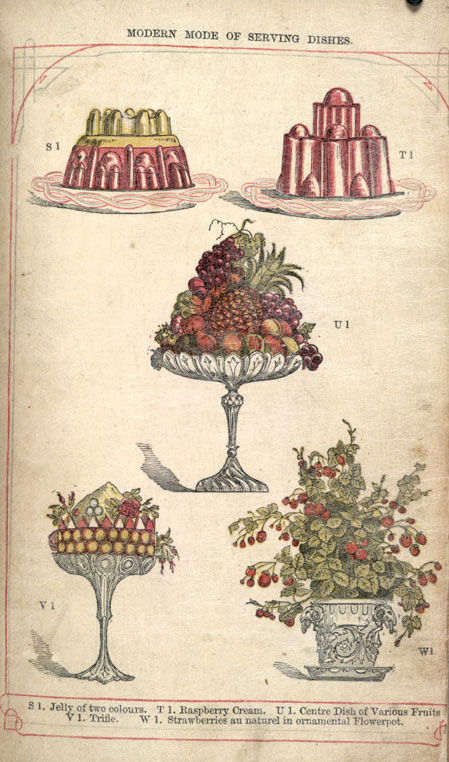
Surprise! (Or maybe not.) Most gelatin is made from the byproducts of meat and leather industries, usually bones and skin. In its purest form, it’s 98 to 99% protein, tasteless and odorless. Gelatin was around as far back as the Middle Ages. Because it was hard to make, it was reserved for the wealthy.
Though making gelatin is still a complicated endeavor, modern industry has streamlined the process. According to the U.S. Department of Agriculture, making gelatin from cattle bones is a 20-week process: bone crushing, cooking, spinning in a centrifuge, drying, degreasing, treating with a weak hydrochloric acid solution, several water washes, treatment with a lime slurry to remove everything that isn’t collagen, more washing, filtering, neutralizing the pH, sterilizing, cooling, and hot air drying.
Who created this process anyway?
Besides candy and supplements in gummy form, gelatin stabilizes, thickens, and adds texture to a wide variety of foods.
Fun (non-food) fact: Gelatin has been used in photography from early daguerreotypes to modern silver film.
How Bones Help Us Eat
- Eating utensils: No doubt our long-ago ancestors made them, but today you can buy bone place settings (knife, fork, and two-sizes of spoons), as well as bone spoon/fork serving utensils and miscellaneous bone spoons in various shapes and sizes. Bone handle flatware is more common now.
- Bone china: Unlike porcelain, which contains only minerals, bone china includes bone ash. It originated in England in the 1700s. For a long time, virtually all bone china was made there. Historians generally recognize Josiah Spode I as the one who standardized bone china production. The Spode family’s business—Spode—is still making bone china. Today, bone china is made around the world by companies such as Lennox, which has made numerous pieces for presidents since 1918.
Bottom Line: From ancient times to today, bones have nourished people, often with the aid of bone eating utensils.
